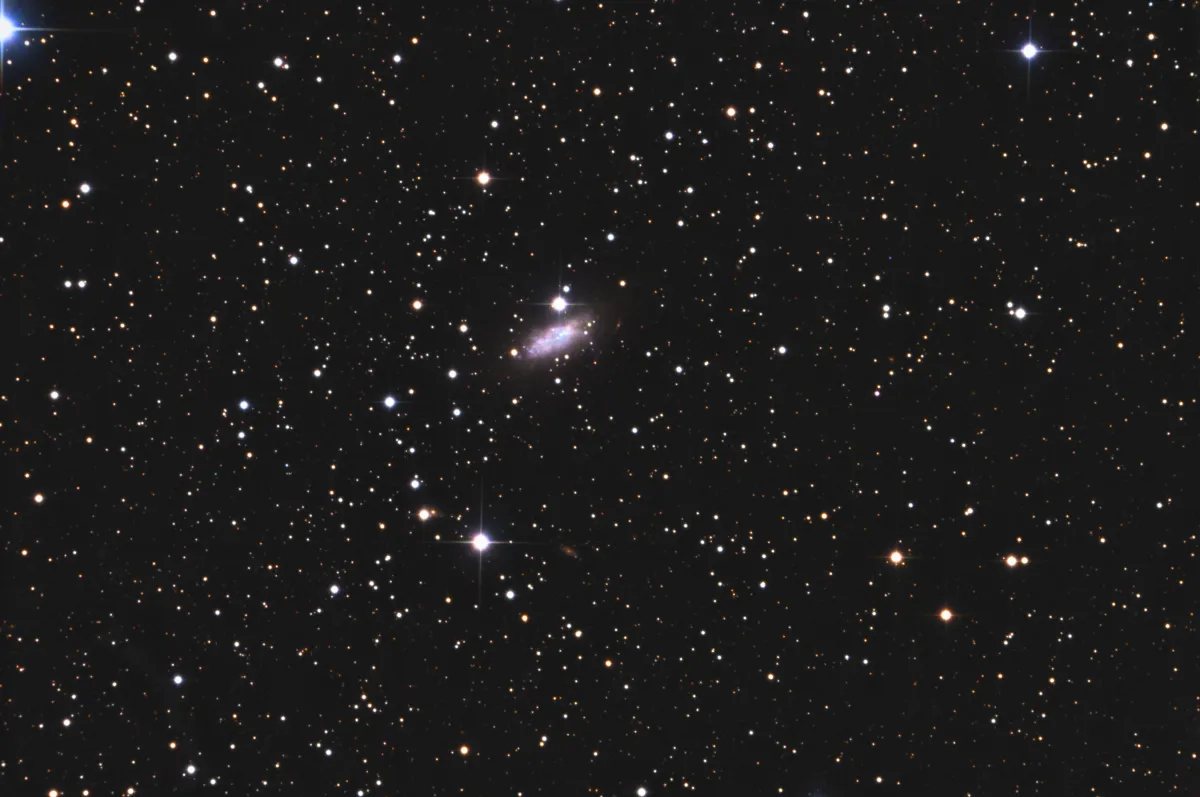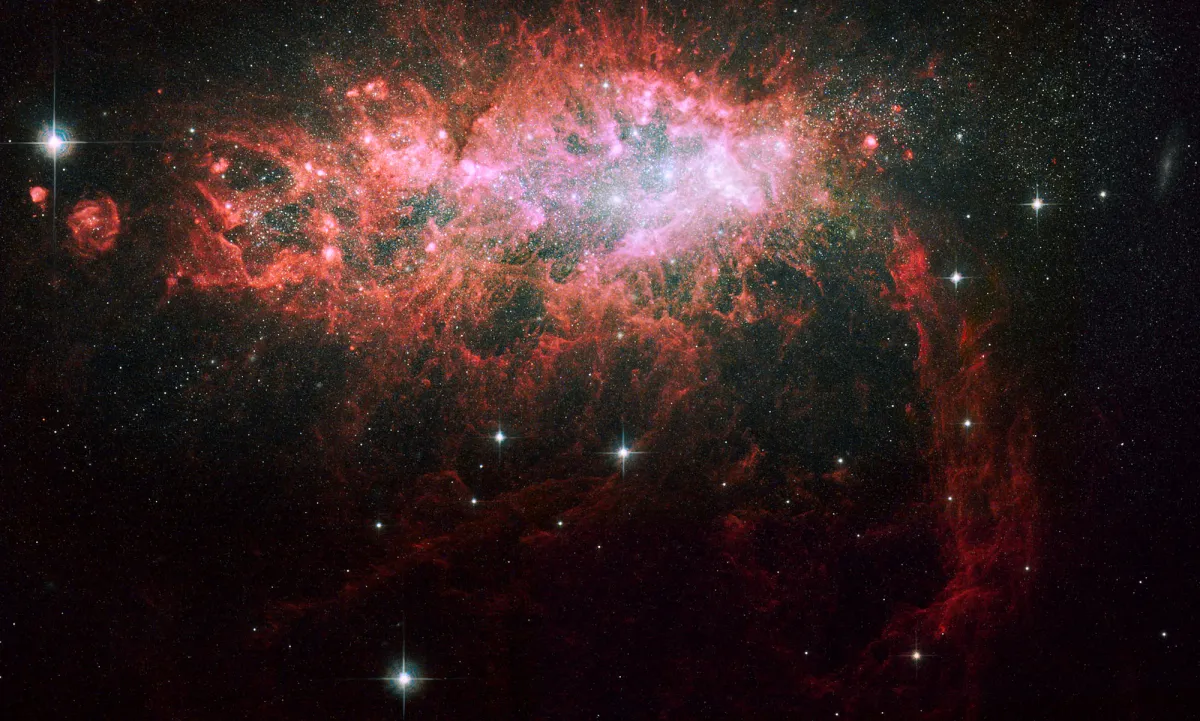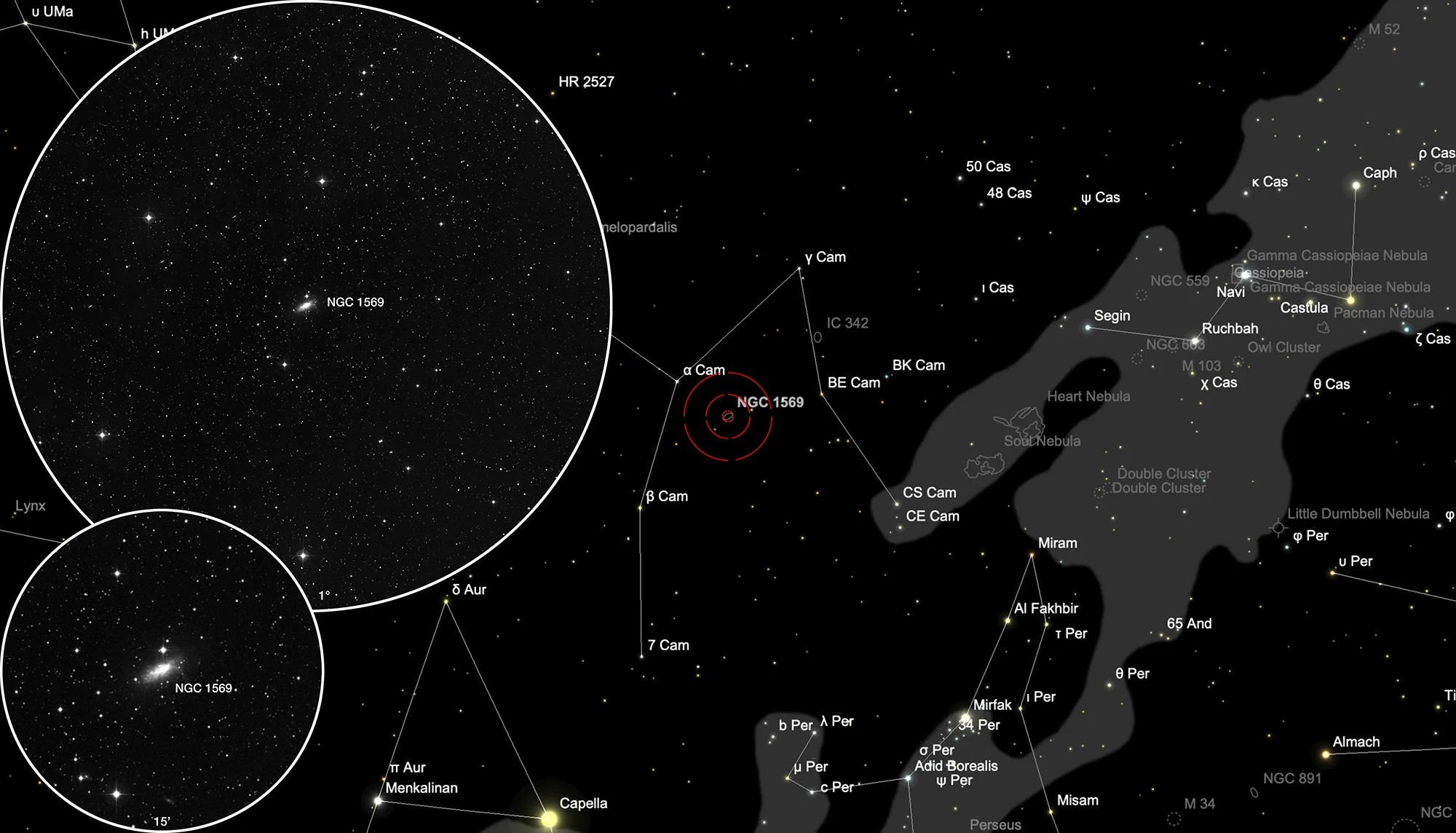Galaxy NGC 1569 (Arp 210)

History
This galaxy was discovered by William Herschel on 4 November 1788 using his 18.7 inch reflecting telescope. He cataloged it as II 768 (class II = faint nebulae) and noted: «Pretty bright, small, little extended, bright nucleus, just south of pretty bright star.» [464]
In 1966 Halton Arp published his «Atlas of Peculiar Galaxies», where he ordered galaxies into groups based on purely morphological criteria. The galaxy NGC 1569 is listed as Arp 210 in the group #209-214 «galaxies with irregularities, absorption and resolution». He remarked: «Much absorption, resolution into stars.» [199]
Physical Properties
NGC 1569 is an irregular dwarf galaxy with a very high star birth activity, 100 times faster than observed in our own Milky Way Galaxy, and lasted almost continuous for the past 100 million years.
The core is around 5000 light years wide and a grouping of three giant star clusters, each containing more than a million stars. They reside in a large, central cavity, where the gas already has been blown out by the multitude of massive, young stars that already exploded as supernovae. These explosions also triggered a violent flow of gas and particles, which formed giant gaseous structures.

The biggest and brightest objects surrounding the core are stars scattered throughout our Milky Way Galaxy. In contrast, the thousands of tiny white dots in the HST image are stars in the halo of NGC 1569. The galaxy lies in a distance of about 11 million light-years, in the middle of a group of about 10 galaxies centred on the spiral galaxy IC 342. Gravitational interactions among the group's galaxies may be compressing gas in NGC 1569 and igniting the star-birthing frenzy. [584]
| Designation | NGC 1569 |
| Type | Gx (IBm) |
| Right Ascension (J2000.0) | 04h 30m 49.1s |
| Declination (J2000.0) | +64° 50' 53" |
| Diameter | 3.7 × 1.8 arcmin |
| Photographic (blue) magnitude | 11.9 mag |
| Visual magnitude | 11.0 mag |
| Surface brightness | 12.9 mag·arcmin-2 |
| Position Angle | 120° |
| Redshift (z) | -0.000347 |
| Metric Distance | 2.900 Mpc |
| Dreyer Description | pB, S, lE, bNM, * 9.5 n 1' |
| Identification, Remarks | WH II 768; GC 847; UGC 3056; MCG 11-6-1; CGCG 306-1; Arp 210; 7ZW 16; IRAS 04260+6444 |
Finder Chart
The galaxy NGC 1569 lies in the constellation Camelopardalis. The best time to observe it is from August to April, when the circumpolar constellation is at its highest in the sky.
